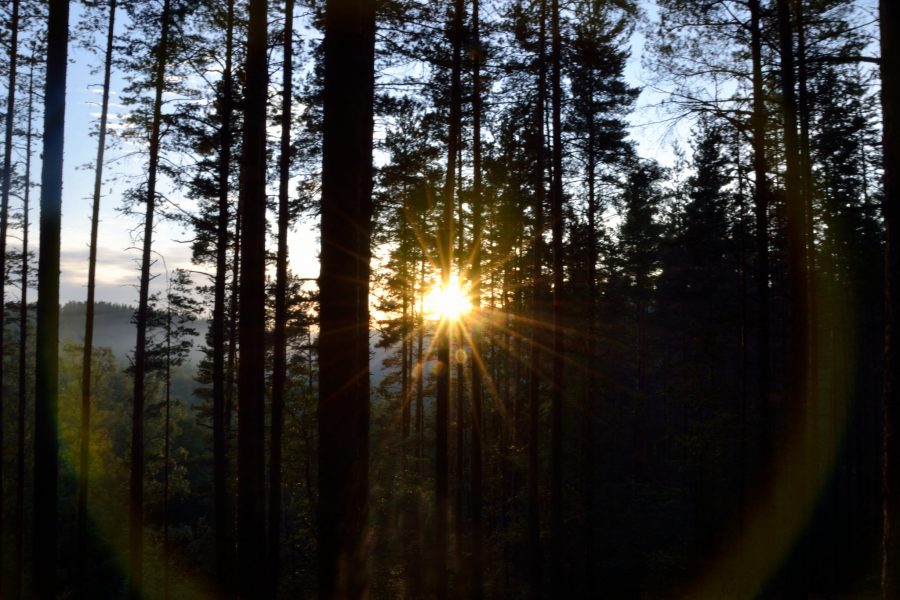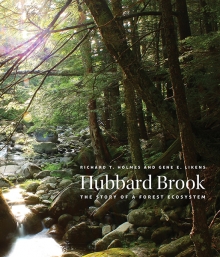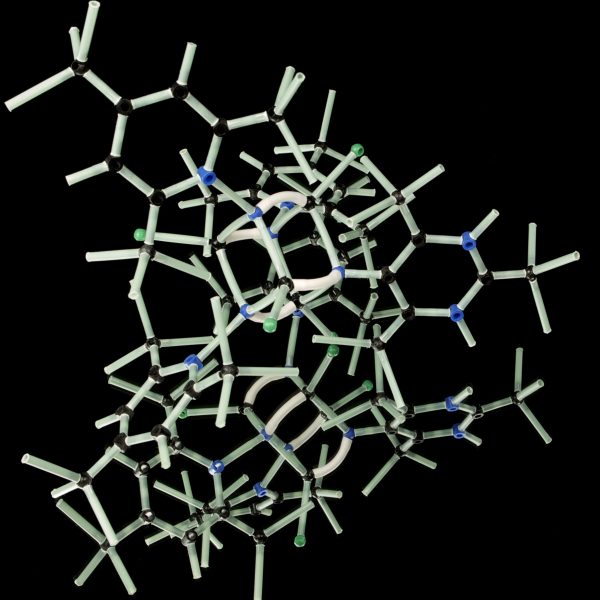The Discovery of Acid Rain
Gene E. Likens and Richard T. Holmes—
Acid rain or acid precipitation or acid deposition as it is variably called, was first identified in North America more than five decades ago at the Hubbard Brook Experimental Forest in the White Mountains of New Hampshire. Scientists who were initiating the Hubbard Brook Ecosystem Study at that time were surprised that their first samples of rainfall, collected in 1963, were up to 100 times more acidic than they expected them to be. Indeed, the first sample collected on July 24, 1963 had a pH (a measure of acidity) level of 3.7. It was thought at the time that the background value in areas remote from major human activity would be around pH 5.6. Hydrogen ion concentration changes tenfold between each whole unit of the pH value, i.e. pH 4 is 10 times more acidic than pH 5.
This surprising discovery raised many questions, such as, How widespread was this problem? How long had precipitation been this acidic? What was the origin of the acidity? What might be the long-term effects, both locally and regionally? The work of many scientists over many years and especially those at Hubbard Brook was required to find answers to such questions, and it took the Hubbard Brook scientists nine years before they published their first paper on this topic. They titled their paper “Acid Rain,” a term that quickly caught on with the public during the following two decades. At the time, they didn’t realize that a British scientist had used this term in 1872 to characterize polluted rainfall in a heavily industrialized area of Great Britain.
This acid rain problem became THE environmental issue of the 1970s and eventually led to President George H. W. Bush signing into law in October 1999, Clean Air Act Amendments that specifically addressed acid rain and mandated reductions in emissions of sulfur and nitrogen oxides — the major precursors of acid rain in the atmosphere. Acid rain is formed when sulfur dioxide (and nitrogen oxides) are emitted to the atmosphere by the combustion of fossil fuels, primarily coal and oil burned for the production of electricity by large power plants in the Midwestern United States. As these oxides are carried eastward by prevailing winds, often traveling thousands of kilometers from their original source, they are converted to strong, mineral acids, sulfuric and nitric acids that are then deposited on the landscape in wet (rain, snow, sleet, hail, cloud water and fog water) and dry (gasses and acidifying particles) deposition. As a result, pollutants from power plants in southern New Jersey, Indiana, or southern Michigan impacted relatively pristine forests, lakes and streams in more undeveloped parts of southeastern Canada, New Hampshire or Maine. Acid rain became the popular collective term for characterizing all forms of acidic deposition.
Following the passage of the 1990 Clean Air Act Amendments there was a rather collective “sigh of relief” in many quarters that this environmental problem had been resolved and political, media and public attention declined dramatically. Unfortunately, however, this environmental problem did not go away. The relentless “rain” of these acidic pollutants on sensitive ecosystems, particularly on sensitive soils (soils with low buffering capacity) leached large amounts of base cations (calcium, magnesium, potassium, sodium) from these soils making them even more sensitive to continuing inputs of acid rain. Currently, the acidity of precipitation at the Hubbard Brook Experimental Forest is about 80% less than it was in 1963 (see graph below), but because this precipitation is falling on soils with greatly reduced ability to buffer these inputs, the ecological affect continues to be large. Thus, to adequately protect our forest, lakes and streams in areas with sensitive soils, greatly reduced in buffering capacity, further reductions in emissions of sulfur and nitrogen oxides are still needed.

The 50-year record of Acid Precipitation at Hubbard Brook (from Holmes & Likens 2016)
Richard T. Holmes is Research Professor of Biology at Dartmouth College, where he is also Harris Professor of Environmental Biology Emeritus. He lives in Grantham, NH. Gene E. Likens is co-founder of the Hubbard Brook Ecosystem Study and founder and President Emeritus of the Cary Institute of Ecosystem Studies. He lives in Clinton Corners, NY.




























This was very helpful for my speech about acid rain!




 You most likely won’t know this, but…I’m a 9 year old kid and I’m in 4th grade. When I send you this comment, you’ll probably be thinking,” Why in the world is a 9 year old boy writing a speech about acid rain”?! Well, I’m doing this speech competition called ” Tropicana Speech”, so yeah.
You most likely won’t know this, but…I’m a 9 year old kid and I’m in 4th grade. When I send you this comment, you’ll probably be thinking,” Why in the world is a 9 year old boy writing a speech about acid rain”?! Well, I’m doing this speech competition called ” Tropicana Speech”, so yeah.
This was very helpful for my speech,about acid rain, and I really do hope you write more about acid rain!;(!!!!



 !!! Thank you so much for allowing me to use this wonderful, splendid, and awesome website. You most likely don’t know this, but…, I’m a 9 year old 4th grader. You’re probably thinking,” Why in the world is a 9 year old 4th grader writing a speech about acid rain. Well, I’m in a speech competition, and for the competition, I have to pick my own topic, and write a speech about that topic, so, yeah!!!
!!! Thank you so much for allowing me to use this wonderful, splendid, and awesome website. You most likely don’t know this, but…, I’m a 9 year old 4th grader. You’re probably thinking,” Why in the world is a 9 year old 4th grader writing a speech about acid rain. Well, I’m in a speech competition, and for the competition, I have to pick my own topic, and write a speech about that topic, so, yeah!!!




Good luck!
Acid rain study really began about 1955 in the small town of West Thorton N.H. on Hubbard brook. I was hired by George Trimble to support his associates And crew at the site. I still possess my original employment instructions of the project, and Lots of memories of the site development.